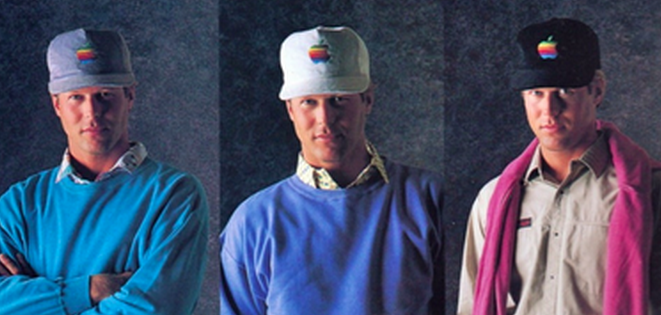 And in-depth look at direct response television, how far the medium has come in three decades, and where it’s headed
And in-depth look at direct response television, how far the medium has come in three decades, and where it’s headed

It may have its roots in Ginsu knives and Pocket Fishermen, but over the last 30+ years DRTV marketing has proven itself as a cost-effective, accountable, measurable, and powerful way to entice customers to place orders over the phone, via the Internet and mobile, or even drive them into retail stores to see and touch the products firsthand.
Broadly defined as any TV commercial that includes a response mechanism (800 number, URL, SMS or mobile app code, or “push to order” button on your TV remote) to generate an immediate response to purchase a product or request more information, DRTV commercials can be of any length: 15-, 30-, 60- or 120-second “spots” (short-form) or 30-minute “infomercials” (long-form). In use since the dawn of TV, DRTV goes beyond the oft-seen Pajama Pants, PedEggs, and Magic Bullets to account for more than $100 billion in annual product sales.
So what’s the big attraction, you ask? It starts with cost. For the price of 30 seconds of media in prime time network TV (8–11 PM), advertisers can fund dozens of DRTV airings across a broad range of stations. Additionally, the direct response metrics of a long- or short-form DRTV commercial can be accurately tested with as little as $25,000 in media expenditures. Even an emerging brand working on a small advertising budget, for example, can feasibly enhance a campaign with a DRTV-driven marketing effort that produces a measurable return on investment.
Spot DR media is regularly purchased at steep discounts of 10 to 50 percent off rate card. In the recession driven soft advertising market of 2008–2010, for example, long-form DRTV media rates were down between 10 and 20 percent on average, to levels not seen since the turn of the millennium, as TV stations and cable networks responded to deteriorating ad revenues by replacing entertainment programming with paid 30-minute commercials. Even today, despite spending more time on their computers and smart phones, TV viewing households are on the rise and TV viewing hours are still averaging as high as almost five hours per day for some age groups – always a good sign for DRTV.
In this article we’ll look at DRTV’s deep roots, discuss how far the medium has come since its origination, and share some insights into direct response’s promising future in today’s crowded advertising and media environments.
Where It All Began
The modern infomercial era started during the fall of 1984, when Herbalife generated millions of dollars in revenues through its weekly, Sunday-evening motivational pep rallies on USA Network. Since then, the short- and long-form DRTV industry has grown by leaps and bounds, thrived during several economic downturns, and gained mass acceptance by brand advertisers who have come to love the medium’s accountability and direct-to-consumer approach.
Because of the tremendous infomercial industry growth and positive effects of self-regulation instituted by the industry’s trade group (Electronic Retailing Association), major institutions and Fortune 500 and 1000 corporations have tapped into this successful, proven marketing channel. Many well-known retailers, financial institutions, publishers, insurance companies, and manufacturers have used infomercials to showcase their products, including American Airlines, Blue Cross-Blue Shield, Clorox, Estee Lauder, P&G, Microsoft, Nissan, and Pepsi, among others.
Media cost isn’t DRTV’s only alluring quality. Companies of all sizes and across most industries use DRTV because the medium helps companies tell their product’s story in a format that is not only measurable and accountable, but that can perform far better than traditional 15- or 30-second branding spots in recall, intent to purchase, and enhanced brand awareness. And, proving many skeptics wrong, DRTV has also demonstrated it can do more than just support brands; it can create them too. Guthy-Renker’s ProActiv skin care product started with a million dollar DRTV investment (vs. tens of millions for major brand companies to launch a new product) and today is a billion-dollar brand.
Another one of DRTV’s biggest attributes is its ability to accurately and methodically track exactly where customers are coming from, what they buy (and what they turn down), and how often they come back for more. With this information in hand, advertisers can make quick decisions regarding the best allocation of their marketing dollars—something that traditional TV advertising simply can’t match.
Finally, DRTV allows companies to talk directly to their consumers, collect information from them and educate them with a luxurious amount of time. Using short-form and/or long-form DRTV commercials combined with other forms of advertising, marketers can not only get their points across, but they can also pound those points home for the TV viewer and web surfer.
Driving Key Points Home
In our new, consumer-driven, fragmented media universe, consumers want more relevant information at more touch-points. They’re no longer prompted to try a new product or check out a new service based on a single contact, and have come to expect a more integrated approach that includes print, TV, radio, web, mobile, and other advertising techniques. The most recent economic downturn further complicated matters as frugal consumers started doing more comparison-shopping. In search of the best deals, they clipped and/or downloaded coupons, waited for discounted offers, and tuned out irrelevant messages.
Along the way, consumers also sat up and began paying more attention to DRTV, which routinely demonstrates product benefits as solutions to everyday problems. With longer selling messages and prominent value based offers, direct response speaks the language anxious consumers want to hear. Free premiums and discounts are popular any time; in a troubled or rebounding economy, they’re compelling. Equally as persuasive are DRTV’s longer-format commercials that “tell” along with the “sell.” By taking the time to educate consumers on the benefits and features of a particular product or service, DRTV:
• Explains multiple product benefits, thus heightening value
• Offers in-depth product demonstrations, thus engaging viewers
• Introduces real people and expert testimonials, which builds credibility
• Repeats key selling messages, which enhances persuasion
• Takes customers through a complete sales story, thus deepening understanding
• Differentiates from competitors, which boosts preference
• Allows for consideration of the purchase decision, which creates purchase justification
Now, it’s important to point out that despite the clear advantages of using DRTV, the road to more widespread advertiser and consumer acceptance has been paved with obstacles. Since they began, long form television marketers have had to face down accusations of being “boardwalk pitchmen” of dubious reputation, adjust to regulation, de-regulation, and re-regulation by federal agencies, and regain the confidence of a disenchanted TV-viewing audience. Through it all, infomercial advertisers have adapted and thrived and will continue to do so in spite of ongoing challenges, such as those that exist today.
In many cases, it’s the traditional advertising agencies that thwart companies’ interest in DRTV.
Old habits die hard, and it’s no secret that brands and their agencies hate to “ask for the order.” Still, DRTV continues to gain traction among those brands, especially short-form, and is particularly attractive to those that are seeking an affordable, accountable advertising mechanism that works well with myriad other mediums.
DRTV Plays Well With Others
As DRTV matured and came on its own, users discovered just how well the medium supplements an existing advertising/media mix. Working in concert with other advertising avenues, DRTV can bolster consumer awareness of a product, provide more information about it, and explain the benefits better than any other form of media. Here are five ways that DRTV has proven its ability to blend well with various advertising efforts:
- By running infomercials on national cable and broadcast television, a product’s story and benefits can be shared with millions of additional prospects. Direct sales are made in direct proportion to the number of television viewers. The cost per lead (CPL) or cost per order (CPO) can often match or beat other direct marketing channels such as direct mail or print ads.
- Within the DRTV campaign itself, short-form and long-form formats work in tandem with one another. In most cases, for example, short-form commercials round out and complement the infomercial campaign. Very often, companies will cut 60-, 90-, or 120-second commercials out of their infomercial and run a simultaneous short-form campaign. Normally, the short-form spots are not as profitable as the infomercial, but by reminding viewers of the product (they may have seen previously in the infomercial) in short bursts throughout the day, they can create a synergy with the infomercial to boost profitability.
- A powerful, highly versatile platform DRTV also pairs up well with online video, social media, mobile advertising, and Web 2.0 advertising mechanisms. With its ability to do the heavy lifting while simultaneously delivering efficiency and effectiveness metrics, DRTV can be utilized in a variety of tactical ways. Major consumer brands, for example, are creating DRTV commercials that powerfully drive retail store sales while partially offsetting the cost of media with direct sale revenues, thus producing MER’s of 0.3 or more. DRTV campaigns have also launched many CRM initiatives within companies new to one-on-one marketing and previously unaware of the value of a large, dynamic customer database.
- Companies often repurpose the DRTV footage for point-of-sale displays and to add “sticky” video assets to their web sites. In fact, DRTV has measurably been proven to outperform general TV advertising in terms of delivering vast amounts of valuable information and lifting overall ROI of advertising budgets. And with more companies using social networking, the web, mobile advertising, and online video to communicate directly with consumers, it just makes sense that DRTV would serve as the perfect adjunct for these forward-thinking marketing campaigns. Instead of simply slapping a 30-second image spot on the TV airwaves and hoping that customers will respond favorably, companies of all sizes—and from all industries—are taking a more proactive advertising approach using DRTV’s greater length and economic media costs.
- Online video is an especially compelling option that works extremely well with DRTV. In fact, we’ve found that online video helps to create consumer trust and ultimately results in more transactions. And research shows that over 60 percent of DRTV viewers go online to learn more about a product or service before ordering. The boom in online video is happening because “videoactive” web sites (using video intensively on formerly text-heavy web pages) educate consumers, entertain them, and give consumers an opportunity to opt-in to additional information presented in a highly entertaining video format.
With the use of mobile also on the rise, companies are seeking out ways to effectively integrate mobile with more traditional channels. This is especially critical for firms looking to hit younger demographic groups, from pre- teen to late-20s, who heavily rely on their mobile phones. Gen X (30–45) and Gen Y (20-somethings) are also good responders to mobile offers, making the case for such campaigns that much more compelling. More and more, the CTAs in DRTV commercials are including SMS mobile phone app codes and smartphone TV apps as response mechanism alternatives to 800 numbers and URLs.
The Road Ahead
Developments in and around the DRTV industry reveal an exciting future filled not only with individual successes but also with integrated campaigns that are leveraged across various platforms. Seemingly innocuous developments (like viewers’ ability to watch TV content on their tablets and mobile devices) have substantial impact on the way advertisers and their agencies think, and on the methods they’re using to reach current, past, and future customers.
As marketers roll out more smartphone apps on their commercials’ tag pages to enable growing mobile phone response, and utilize other innovative, integrated advertising methods, we’ll be right by their side. By integrating these and other channel innovations with well-thought-out DRTV campaigns, marketers will be able to gain an edge and approach consumers in the fastest, most efficient and profitable manner possible.
Take mobile app shopping, for example. Much like we’ve already seen happen with QR codes, location apps, and other cutting-edge innovations that people are skeptical about at first, the time when DR marketers will publish app logos on screen alongside toll-free numbers and URLs may not be far off. WiOffer’s TV-2-Mobile WiO app, for example, allows audiences to interact with TV and radio advertising, TV and radio content, and brands across multiple mobile devices, including smartphones and tablets.
It works like this: a consumer opens the WiO app on his or her mobile phone or other device while watching a TV commercial that features the app’s logo. Upon holding up their device to listen to the audio or verbalizing the specific keyword, consumers are taken to a page featuring the product that they just saw advertised on TV. Using the app, the potential customer can place an order immediately, save the information to review later, or just educate herself on the product’s features and benefits.
The concept gels well with some of the new mobile trends that companies like eMarketer are tracking. According to Mobile Apps Help Lure Customers, Spur Loyalty, an eMarketer survey of executives at companies with annual revenues of at least $250,000 found that they were using customer-facing apps to engage with customers in a variety of ways: providing information, as a customer relations management tool, and to build a brand. The most common use of mobile apps was to communicate with customers, named by 83 percent of respondents. Next was the provision of customer service or support (79 percent), the provision of information about a product (74 percent), facilitation of transactions (69 percent), and brand engagement (67 percent).
Here at Hawthorne Direct, we stay on the cutting edge of the advertising industry, while at the same time employing tried-and-true DRTV methods that deliver consistent results. We use highly innovative upsell techniques and back- end programs, for example, to add significant revenue to the initial DRTV and online sales, and to improve our clients’ overall ROI. By blending new innovations with DRTV’s most compelling attractors – cost, accountability, and the chance to tell a product’s story – marketers can effectively leverage direct response’s best qualities, stretch their budget dollars, enhance their campaigns, and build brand awareness in a very economical and effective manner.



![Is Your Agency Ready for Agile Marketing? [Infographic]](https://blog.hubspot.com/hs-fs/hub/53/file-2166362396-png/blog-files/phq-agile-marketing-infographic.png)


